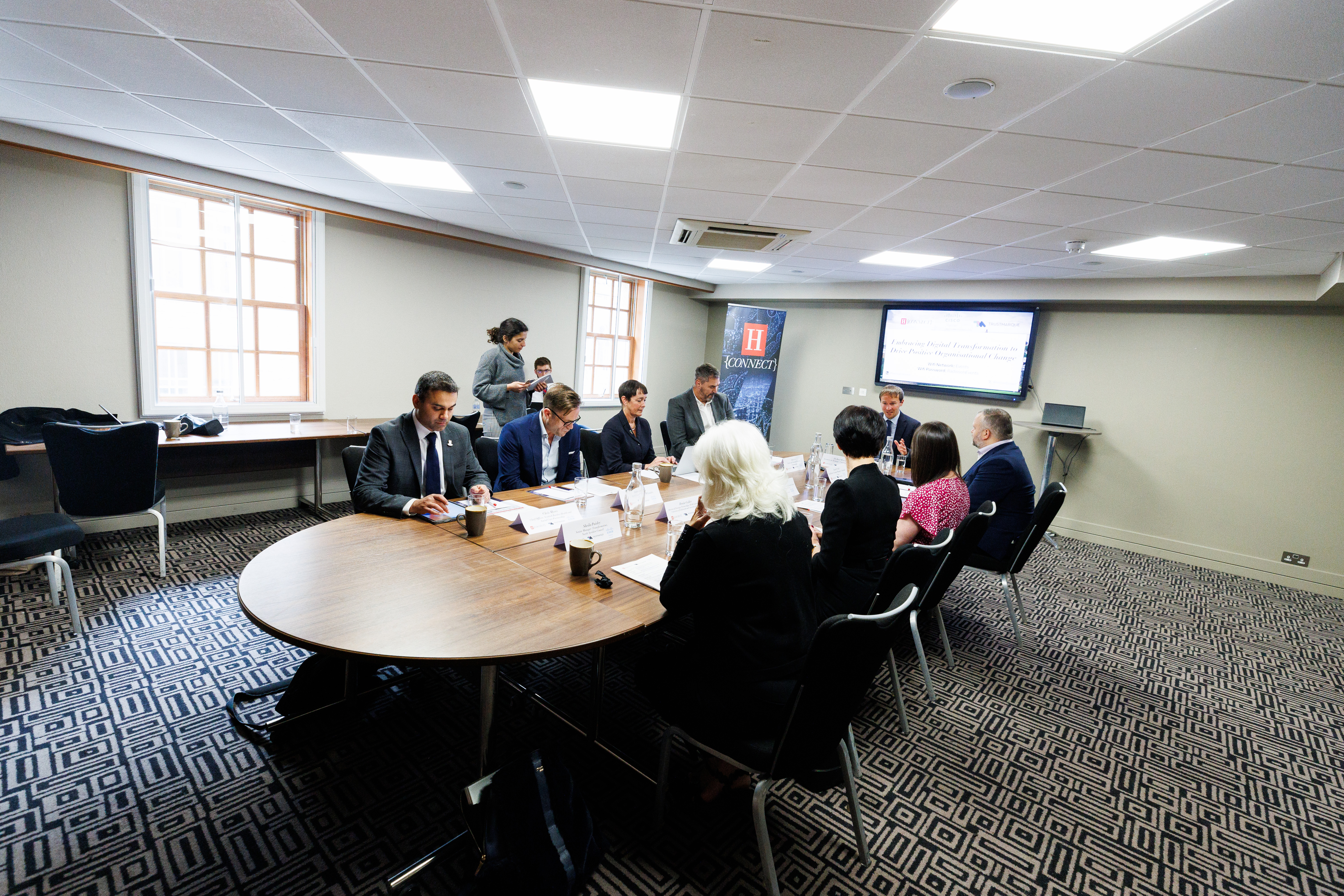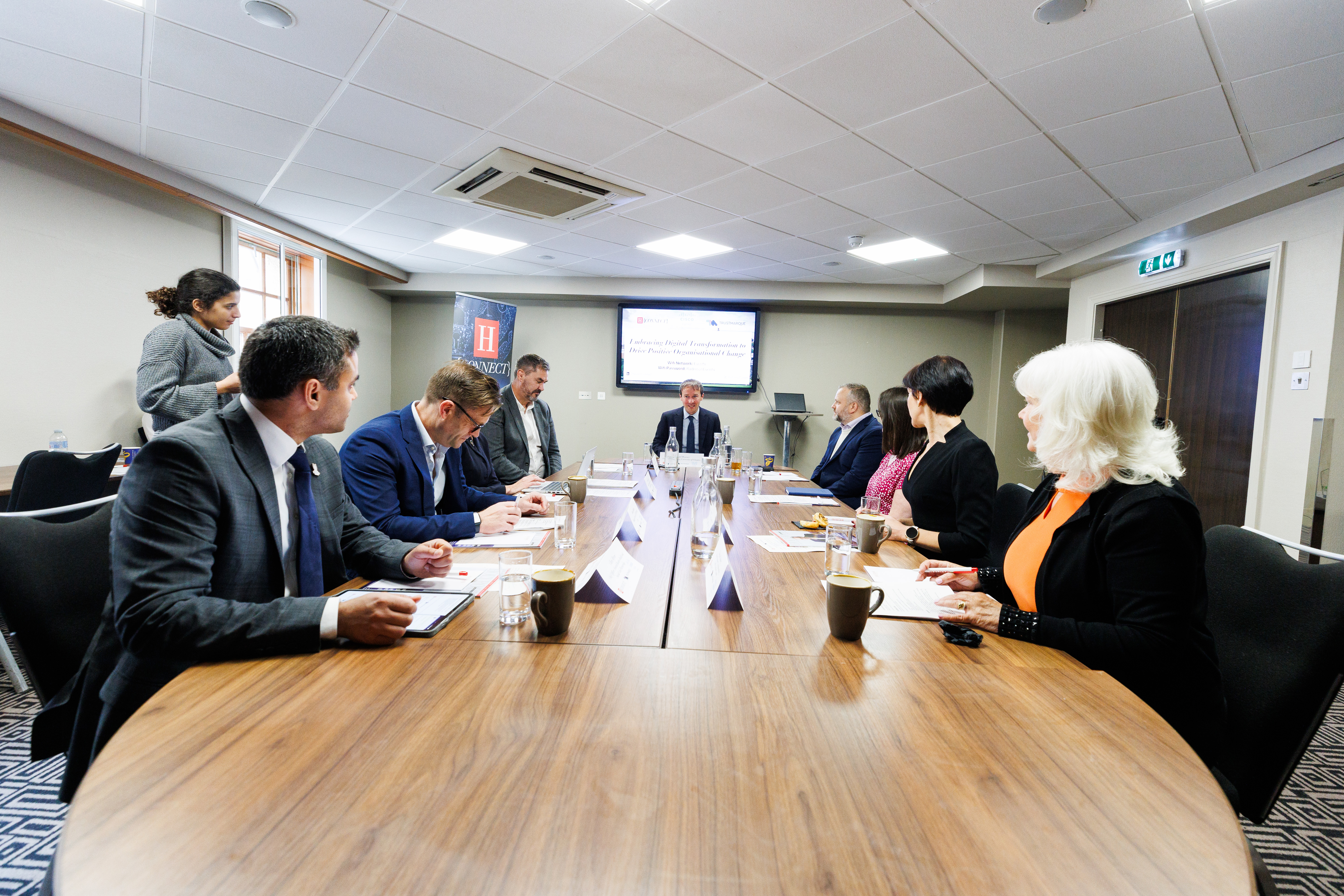Roundtable report: Driving the digital revolution
It’s been three years since the Scottish Government last updated its digital strategy.
A knee-jerk reaction to the Covid pandemic, it was drawn up to ensure everyone in Scotland had “the skills, connectivity and devices” needed to thrive in a digital nation.
One focal point was to transform public services so they could embrace the opportunities offered by digital ways of working.
A recent progress report by local government umbrella body Cosla revealed the strategy has since reached various milestones, with 11 public sector organisations now using cloud technology and more than 70 AI-powered automation programmes rolled out across the Scottish Government and public sector bodies.
In the report, the government also pledged to introduce digital portfolio management to better prioritise digital spending within the Scottish Government and agencies by the end of the current parliament – expected to be 2026.
So, the question now is not whether the Scottish public sector is digitising processes and services but whether it is doing it at the scale and pace that it should.
Amid a health and social care crisis, with waiting lists reaching a record high in May, and a budget that has left councils in difficult financial straits, it could be argued that unlocking the full power of digital could relieve pressures within the public sector.
Holyrood, in partnership with Trustmarque and Cisco, brought together digital leaders from across the sector to address the barriers slowing down the digital transition and how to overcome them.
Taking place at the Radisson Blue Hotel in Edinburgh, the roundtable saw attendees highlight the value of data, cross-sector collaboration, and a skilled workforce.
Kicking off the debate, Denise Calder, director of strategic partnerships for the Cancer Research UK Scotland Centre at the University of Edinburgh and the University of Glasgow, called out for a consistent policy to speed up digital adoption. “Digital transformation is an enabler to identify and articulate what our problems are and devising the correct approaches to solving them,” she said. “But what we see at the moment is too much fragmentation in our clinical systems across Scotland. We have 14 different territories, all with their own risk appetites around data sharing.”
Members around the table agreed with her, suggesting this had led to an unclear strategy on how to implement initiatives such as Once for Scotland, a project designed to transform existing NHS Scotland workforce policies so that they promote consistency.
The amalgamation of health boards has been a focal point of discussion for political parties north of the border. Perhaps the most ambitious plan comes from Scottish Labour, which aims, if elected in 2026, to reduce the number of health boards to three to cut through bureaucracy.
Pushing the conversation forward, David O’Neill, healthcare account manager for Scotland at Cisco, called for a “ministerial decision” on a one-for-all approach on how to handle data and technology. He added: “There needs to be building blocks, shared amongst the different digital directorates, that outline the national information governance policy.
“Those are the fundamental features that are missing. You can do as much as you want in terms of new platforms and new technology, but that’s something the tech sector can’t solve. There has to be a consistent approach, particularly around information.”
 Digital leaders disagreed on certain strategies to move forwrad | Andrew Perry
Digital leaders disagreed on certain strategies to move forwrad | Andrew Perry
However, sounding a note of caution, Jane Fowler, head of customer support services at Argyll and Bute Council, said this top-down approach would not work across all organisations within the public sector. Councils “will not just do what a minister tells them”, she explained, as all Scottish authorities have different needs.
She continued: “You get local democracy for 32 areas, so we have 32 payroll systems, a teacher pay scale, a non-teacher pay scale, etc – all of this despite being part of networks of heads of HR and heads of IT.
“Whereas in NHS Scotland you might wind up with procuring [from] a single system, in local government we’ll be procuring from a fairly small pool of separate systems, but each with their own different contracts, and that’s hugely wasteful.”
Rick Ure, service and solutions director at Trustmarque, then warned that unless a quick solution is rolled out, a constant cycle of disunion would persist. He said: “As we wait for that to be solved, the pace of change and the pressures put on every organisation don’t slow down. This means that everybody then quickly starts solutioning themselves within little silos again.”
Robin Johnston, managed service and RTM leader at Cisco, then went on to suggest that unlocking the power of data would be the turning point for the digital future. “Technology’s capability to be an enabler is only based on what you get into it so there is no progress if the data is disparate. You can’t deliver an exceptional customer experience where the core fundamental part of it is not cohesive.”
This led Sheila Paisley, senior manager for transformation at North Ayrshire Council, to state that having a reliable chain of data supply and demand would be key to simplifying the process of digitisation. She added: “It’s about customer satisfaction. It’s about having baseline data that says, ‘this year we managed to get out this number of benefits’ or ‘we have done a lot more because we’ve streamlined the processes’. This way, citizens would be willing to give their consent for their data to be collected for multiple different systems because they see the value added from it.”
 Attendees call for more collaboration | Andrew Perry
Attendees call for more collaboration | Andrew Perry
Discussing other barriers, Fowler pointed out how a “culture of fear” was also at the root of the slow-down in change. “People are really frightened that something will go badly and affect their ability to do the job for the people that they are destined to work for,” she said. “And we have to work with them to overcome that fear, which again comes back to building meaningful relationships. So, at the heart of it is both the patient and the citizen experience.”
Talking about fear quickly pushed the discussion to focus on cybersecurity. Members around the table agreed that unless this was considered at the first stage of any digital transformation journey, organisations would not secure the long-term sustainability of their transition.
That was recently proven by NHS Dumfries and Galloway. The health board fell victim to a cyber-attack in February and, after failing to meet payment demands from a ransomware group, it saw a “large” amount of its data leaked to the dark web in May.
Johnston said: “It’s the one area of digital transformation you can’t bluff and the one area that changes on a daily basis. To be able to have that knowledge around security, we have to take care of it at an organisational level.
“Because the complexity and the cost around recruiting and maintaining a cybersecurity expert is going exponentially up.”
Receiving nods in agreement from the table, attendees then called for the government to have someone in charge of dictating the overarching cybersecurity guidance for the Scottish public sector.
Calder added: “We’ve got the people who know what should be happening. It’s just not translated into, ‘here is this standard that we [the Scottish Government] recognise is achievable, affordable, and this is how we [the public sector] will be doing it all together’.”
As the debate went on, the gap in communication across the sector became increasingly apparent. For some attendees who had, as Ure said, “the same role under a different guise”, this roundtable marked the first time they had spoken to each other.
The realisation took Karl Warner, lecturer in strategy at the University of Glasgow who also chaired the roundtable, to ask the room what could be done to bring people together.
Calder suggested that organising the “crowded landscape” would ensure the knowledge is shared, and resources are not wasted. “In the cancer space, we have so many well-meaning organisations, which are all doing their individual things to help in lots of different locations,” she said. “The problem is that nobody knows exactly who’s doing what and where.
“So, starting to invest in wiring everything together – in other words, a network of people and not just of systems – is hugely important.”
The complexity and the cost around recruiting and maintaining a cybersecurity expert is going exponentially up.
Building on the case for creating a network, Chris Myers, chief officer at the Scottish Borders health and social care partnership, highlighted that doing so would be key to allow rural Scotland to shift its focus from survival to progress. “In the rural context, it is very much about keeping business-as-usual in the context of the constantly evolving digital landscape. We don’t have the economies of scale or the workforce to keep up in the same way other bigger health boards in the central belt might be able to,” Myers said. “That means that people’s attention is focused on keeping the data system that we invested in many years ago going, so we’re unable to focus on using capacity to look at what’s next within local NHS rural areas.”
Talking further on the resource challenge, Laura Rowlinson, clinical lead physiotherapist and digital and informatics lead at East Lothian Rehabilitation Services, pointed to the tech skills gap as the biggest barrier to a seamless transition. “We know that there’s a global shortage of health and care workers, so we have to keep hold of who we have, and we have to train them up, and we have to make them the talent that we need for today and the future to really drive that digital agenda.”
Calder then suggested that by changing the leadership approach and creating an environment of mutual understanding, the public sector could ensure digital evolution. She said: “I’m working for the University of Edinburgh and the University of Glasgow to pull together what were previously competitive cancer firms into one team, so we’re already seeing that collaboration is possible by pulling together a shared leadership approach with some top-up infrastructure support. This has allowed us to identify areas of good practice where we can cross-leverage capabilities.”
She continued: “But that said, we still have our wings clipped by the fact that we are intrinsically co-dependent with the government and private sector, so we can’t deliver without NHS decision-makers recognising what we can do with the necessary digital enablement.”
Taking in the key points, Ure concluded that the “nirvana” moment of digital transformation would be creating a role to act as the central link in a network of shared information.
He said: “There has to be someone who sits in the epicentre, acting almost as an introductory service or a facilitator. That’s almost more important than the central legislation.”
Holyrood Newsletters
Holyrood provides comprehensive coverage of Scottish politics, offering award-winning reporting and analysis: Subscribe